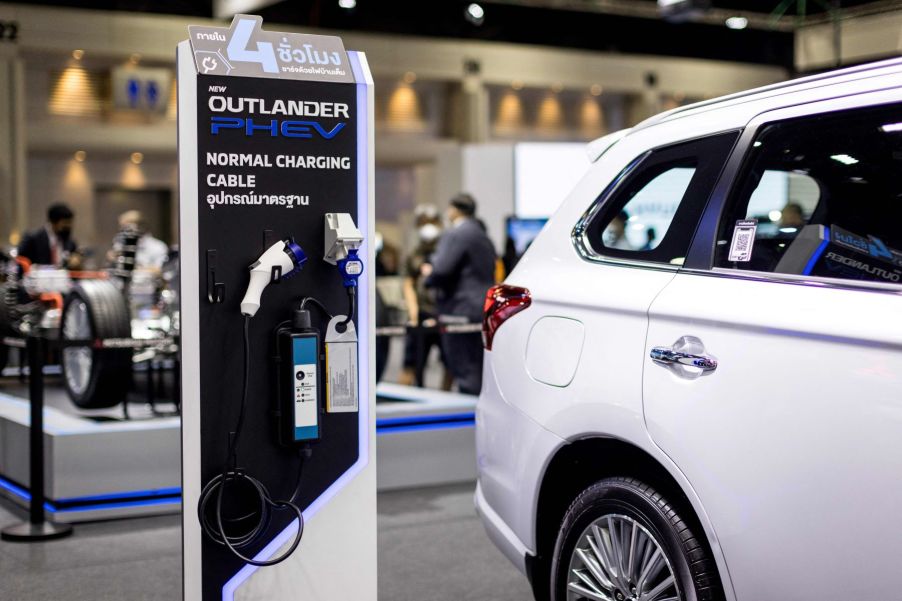
How Long Does It Take to Charge a Plug-in Hybrid Electric Vehicle (PHEV) With Level 1 Charging?
Making accommodations after transitioning to a plug-in hybrid vehicle (PHEV) starts and ends with a clear understanding of the charging times across the three levels of power components. Unlike their EV counterparts, PHEVs lack the range required to complete any lengthy commute.
In fact, any given PHEV model is only capable of about 10% of the range compared to an all-electric vehicle. Where does this leave PHEV models for time to repower using Level 1 chargers?
PHEV equipment for Level 1 charging

Level 1 charging is the standard form of providing power to any PHEV model. These components required for this level of charging come standard with the purchase of most plug-in hybrid electric vehicles. According to the Alternative Fuels Data Center (AFDC), Level 1 charging takes place using a 120-volt AC plug – otherwise known as your standard residential outlet.
Upon purchase, a PHEV model should have a charging cord with two different end-piece attachments. One end contains a NEMA 5-15 connector, or common three-prong plug, and the other an SAE J1772, that plugs into the vehicle’s charging port. Owners can charge their PHEV anywhere a NEMA (120-volt) outlet is located.
Many PHEV owners consider the simplicity of the Level 1 charger an advantage when compared to using a Level 2 or 240-volt charger. Level 2 chargers require a 100-amp 208-240V dedicated circuit installation, along with a heavy and quite expensive distribution line supplying power from the main breaker box.
Level 1 charging rates and times for a plug-in hybrid
Level 1 charging delivers the slowest rates out of the three powering options. However, as reported in HowStuffWorks, certain models, like the Chevy Bolt, come with Level 1 charging equipment that provides both 8-amp or 12-amp power, depending on the setting. Most standard 8-amp Level 1 chargers provide power at a rate of between 3 and 5 miles per 1 hour of charging.
Due to having less range than an EV, this would place the total time for charging a PHEV somewhere between 8 and 12 hours, depending on the model and range. Using a charger that supplies 12-amp power reduces charging times to between 3 and 6 hours. It’s worth noting that not all residential homes will handle a charger with a 12-amp setting, and they could trip your breaker as a result.
These are significantly lower charging times regardless of the setting than any battery electric vehicle (BEV). The U.S. Department of Transportation estimates the charging time of a BEV using Level 1 to be between 40 and 50 hours.
So, how is Level 1 charging most efficiently used for the average driver? According to NeoCharge, overnight replenishing is the ideal scenario for a PHEV owner using Level 1 charging.
Ideal Level 1 charging locations
According to Forbes, Level 1 chargers are the ideal sources for powering a PHEV. This is because they have a much smaller battery than any BEV – but they’re also the most accessible.
Anywhere you venture that provides access to a standard 120-volt wall outlet offers an opportunity to recharge your plug-in hybrid electric vehicle. This can include your home, workplace, retail locations, and almost any commercial or residential location.
The only roadblock you might encounter is the inability to access a wall outlet at any of these locations. Assuming you can park close enough or own a long-enough extension cord, using a Level 1 charger affords PHEV owners the highest amount of options.
Level 1 chargers, while generally overlooked or considered a last resort option for most EV owners, provide a convenient and simple way of charging a PHEV. While they don’t have the range of an electric car, most plug-in hybrid models offer enough electric range for a full commute to and from work or a day of errands around town. Proportionately, Level 1 charging is likely the most efficient and practical option for any PHEV owner.


